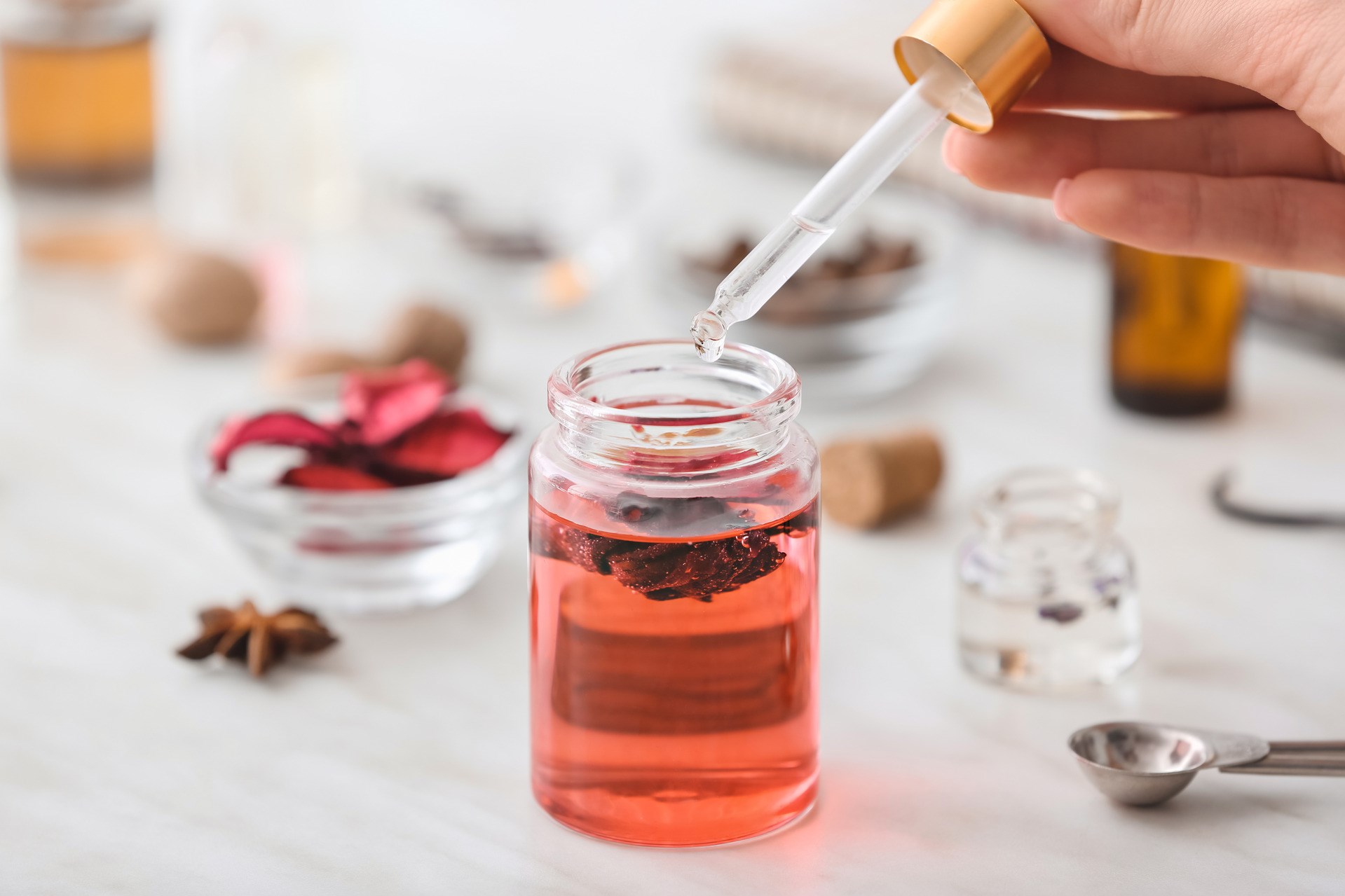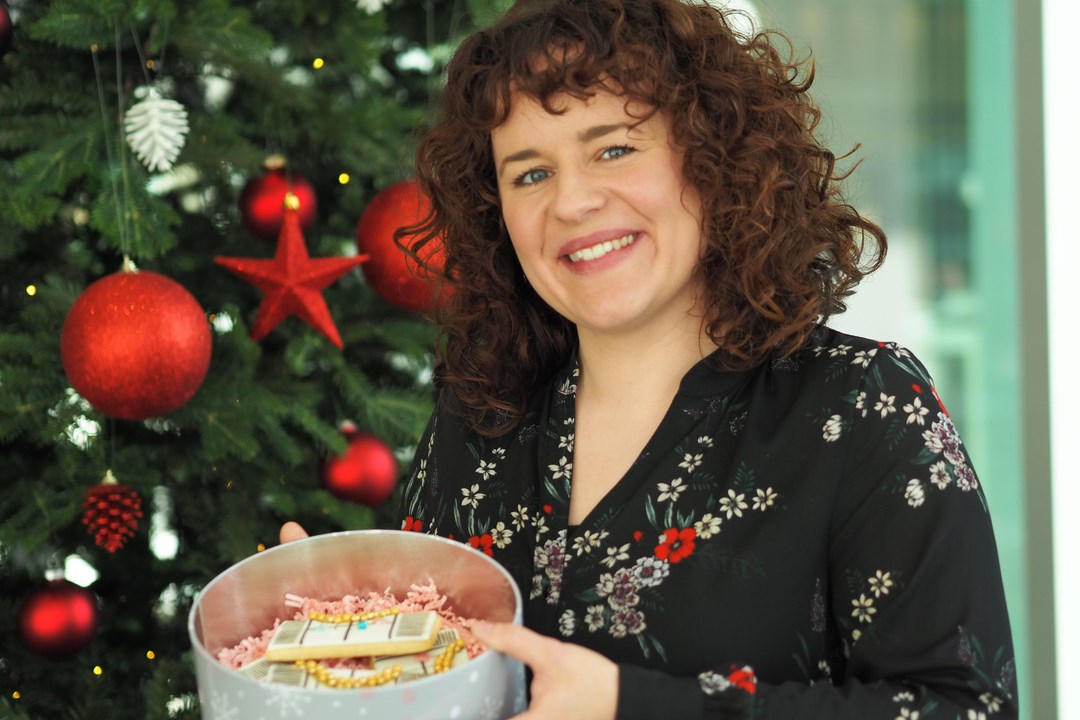
Cinnamon: the scent of winter holidays in the air
Warmth, winter, coziness

"Scents evoke memories. For many of us, cinnamon immediately calls up warmth, coziness, cooking and time spent with loved ones during the fall and winter holidays."
How scents affect our mood
Just a few molecules of a substance are enough for the brain to recognize a scent. Scent is strongly linked to memory. Our brains are able to recognize a gigantic number of fragrance molecules. Researchers are still debating whether this number is in the five- or even 13-digit range. Olfactory information travels through the sensory cells and the olfactory bulb in the brain to its limbic system. The limbic system is, among other things, responsible for memory and emotions.
Scents that we perceive as positive can cause our bodies to release substances such as endorphins, serotonin and noradrelanin. Scents have a major impact on our lives and can provide all sorts of mood enhancement and cognitive benefits, including stress reduction, memory retention, improved sleep and an overall sense of wellbeing.
All people have different experiences of fragrances. However, many cultures have shared experiences and memories associated with particular scents. Thus, for many people, cinnamon buns fresh from the oven can trigger an immediate sense of joy and stimulate the appetite, perhaps because we associate that particular scent with holidays, cooking, family and nostalgia.

How the scent of cinnamon comes to us
Cinnamon, one of the oldest spices in the world, originates from the bark of the Ceylon cinnamon tree. It has been prized for thousands of years thanks to its treasured fragrance, flavor and antimicrobial properties. The aroma and flavor we associate with cinnamon stems from a few primary components, especially cinnamic aldehyde, which is mostly concentrated in the bark. In Sri Lanka, the fragrant trees grow both in plantations and in the wild.
The extraction of the plant substances is quite complex, in particular the production of the concentrated fragrance in the form of the bark’s essential oil. The cinnamon oil from the bark is extracted by way of steam distillation. This process uses steam to separate the volatile from the heavier components. 200 kilograms of cinnamon bark only yield about one kilogram of cinnamon oil. This is a costly process, and, with a yield of 0.5 to 1 % of the raw material, not very productive.

"Cinnamon trees grow in tropical regions. Producing their fragrances synthetically helps satisfy global demand, limits deforestation and aids conservation."
The molecules of cinnamon – what are they?
At LANXESS, cinnamic aldehyde and other cinnamon notes are created in the laboratory. They are all nature-identical. This means that the substances do not differ in any way from the fragrance chemicals found in plants. But no tree has to give up its bark, leaves or blossoms for this.
LANXESS produces the following cinnamon notes, among others:
- Cinnamic Aldehyde: The clear liquid conveys the typical cinnamon notes, with a sweet-spicy, oriental character.
- Cyprinal, another material in the cinnamic scent range, stands for a powerful, warm spicy-floral fragrance.
- Cinnamic Alcohol, in turn, is found in many plants, not only in the Ceylon cinnamon tree. In addition to its spicy-honey fragrance, cinnamic alcohol has a floral note.
- 3-phenyl propanol (hydrocinnamyl alcohol, 3PP) is found in hyacinths, for instance. 3PP rounds off many spice oils and lends flavors a cinnamon, honey or floral note.
Cinnamon from the laboratory: pure and produced to top standards
LANXESS supplies these fragrances and flavorings to a purity level of at least 97 %. The fact they contain almost no foreign substances makes them ideal for further processing, including other chemical transformations. Flavor and fragrance customers demand consistent, high-quality aroma ingredients. These qualities combine to create the high value offered by the LANXESS cinnamic range.
LANXESS produces cinnamic aldehyde, cinnamic alcohol and 3-phenyl propanol in Kalama, USA and Nagda, India. Cyprinal is produced in Widnes, Great Britain. In each case, production is managed according to the highest industry standards.
The production sites are certified to the following standards:
- ISO 9001:2015 for quality management,
- ISO 14001:2015 for environmental management,
- FSSC 22000 for food safety (except Nagda).
Furthermore, the substances are certified as both halal and kosher, an additional quality feature appreciated by many non-Islamic and non-Jewish consumers.
Bringing cinnamon flavor and fragrance to a wide variety of seasonal products
LANXESS's cinnamon notes all meet food-grade standards. But their use is far more diverse:
- Cinnamic aldehyde provides a familiar cinnamon taste and aroma to baked goods and foods. Likewise, it adds its spicy-to-pungent notes to candy, chewing gum, toothpaste and mouthwashes. It is found in soaps, perfumes and household items.
- Cinnamic alcohol is predominantly used in personal care products, soaps and perfumes. It is also used in household care and confectionary products, such as candy and chewing gum, and in ice cream.
- 3PP is also a component of care and household articles, blending well with other substances to create pleasant fragrance mixtures. It can also serve as a multifunctional ingredient to enhance antimicrobial properties, cleansing power, formulation stability, texture and ease of processing in personal care and home care products.
- Cyprinal, with its woody and strong floral notes, provides a warm, intense fragrance. This makes Cyprinal particularly suitable for perfumes — including those used in candles, soaps and detergents.
For the winter holidays, important applications include candles, room sprays and aroma diffusers. You will also find LANXESS cinnamic ingredients in festive hand soaps, detergents, laundry care products, lotions, cosmetics, hair care and cinnamon-flavored foods, beverages and candies.
Fragrance and light for the dark season
Long before the scent of mulled wine hits our noses, our partner plants in Widnes and Kalama start delivering the fragrant substances to customers, mainly in Europe and America.
Flavors & Fragrances distributors supply companies specializing in the development and composition of fragrances. These in turn supply the manufacturers of consumer products. No wonder, then, that production in Widnes and Kalama is in full swing from early summer onwards.
After all, in the run-up to the winter holiday season, we like things to be bright and cozy. In many countries and cultures, this includes the pleasant, powerful scent of cinnamon — and candlelight.
Whether it's Diwali, Hanukkah or Advent, fragrances and lights help to bring us joy, share our culture and create memories of festive times. The next time you smell or taste a product reminiscent of cinnamon, it may be because of cinnamic ingredients by LANXESS.





